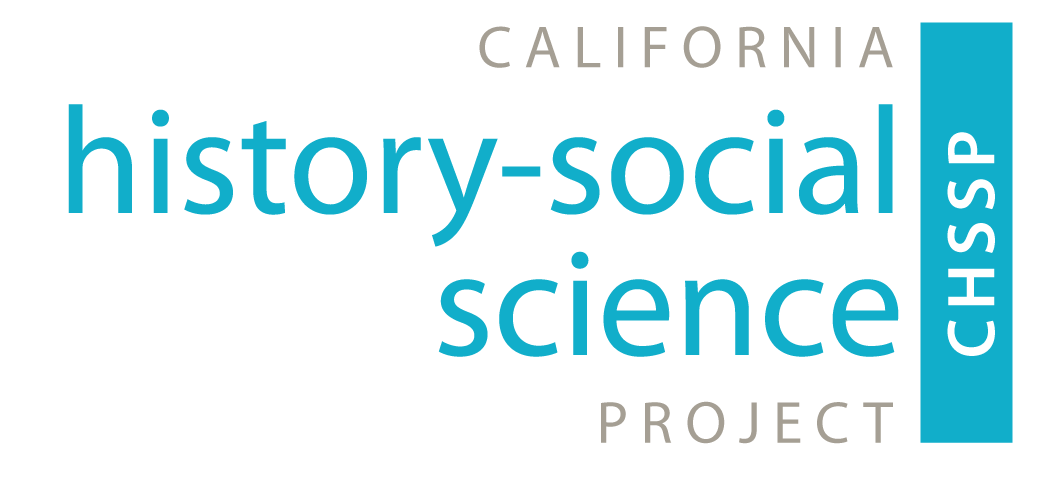Outline of the History Blueprint
Originally posted on January 20, 2011 by Shennan Hutton
So what is the History Blueprint? It involves writing comprehensive curriculum for each of the standards (and each bullet point under each standard) from the California History-Social Science Content Standards for grades 4 through 12. (Those of you who don’t teach in California should not be dismayed, because most of the content standards from California are quite similar to those from other states with standards.) The curriculum units will include lesson plans, primary sources (edited to appropriate length for the grade level), digital media, academic literacy support and historical thinking skills, and assessments for use before, during, and after instruction. These units will be written by teachers, critiqued by other teachers, revised, and then field-tested. During the field-test, SRI International will evaluate the effectiveness of the unit on student learning. They will measure the efficacy of the Blueprint assessments, but also the effects on student achievement on the state exams (CSTs) in History-Social Science and English/Language Arts. The units will be revised again based on the feedback from teachers and the field-test results. Then all the unit-lesson plans, materials, and assessments- will be made available online, free to any teacher to use.
Our first unit will be on the Civil War. Since 2011 is the sesquicentennial of the war’s beginning in 1861, this seems like an auspicious place to start. As we progress, I’ll be sharing with you news about the work our six teacher leaders, my co-workers and I are doing on the unit.
Another component of the History Blueprint is the design of a website to organize the curriculum units and make them available to teachers, and to support the system of assessments. We plan to write a state-of-the-art assessment program. Instead of a final test at the end of the unit, or the end of the year, teachers will have a pre-test and interim tests for each unit. These tests will be short, and they will focus on historical thinking skills and academic literacy, as well as historical content. For example, the pre-unit assessment might contain a short primary source passage and ask the student to identify the perspective of the author. The unit would have several activities teaching students how to identify perspective, with interim assessments. At the end of the unit, the student would read another short passage and identify the perspective of the author. Teachers could use this type of assessment to determine what their students know already and plan their instruction accordingly. At the end of the unit, they would be able to see how much students had learned during the unit. The assessments would actually help the teacher plan and adjust instruction, and measure the effectiveness of different teaching strategies.
The website would support the assessment system in another way as well. We hope to design a system which would make it easy for parents to see the progress of their sons and daughters on the assessments. We will make the questions and answers, along with short explanations and answer keys, available to parents, to assist them in discussing the questions with their children. Parents who want more involvement in their children’s learning will be able to use these assessment tools to work with their children. We hope to make the website disseminate the assessments and results to teachers, parents, and administrators automatically, so that we are not just adding work to already over-burdened teachers.
The History Blueprint is guided by its Advisory Council, which will meet for the first time this spring. Here are the members:
Kristen Cruz Allen, Coordinator
Office of Curriculum and Instruction, Twin Rivers Unified, Sacramento
Member, California History-Social Science Project Advisory Board
Victoria Austin, Director of Development
College of Letters and Science, UC Davis
Nancy Bier, Educational Researcher
Center for Education Policy, SRI International
Kimberly Gilmore, Historian & Director of Corporate Outreach
History Channel, A & E Television Networks
Karen Halttunen, Professor
Department of History, University of Southern California
Anne Hyde, Professor
Department of History, Colorado College
American Historical Association Teaching Division Representative
Betsy Marchand, Advisor
Yocha Dehe Wintun Nation
Ralph Lewin, President and CEO
California Council for the Humanities
Kim Newman, P-20 Partnerships, Teaching, and Leadership
University of California, Office of the President
Jeff Pollard, Teacher
Natomas Charter School, Sacramento
Co-Chair, California History-Social Science Project Advisory Board
Mary Schleppegrell, Professor
School of Education, University of Michigan
Sam Wineburg, Professor
School of Education & Department of History (by courtesy), Stanford University
I would also like to hear your advice. Please feel free to give me your feedback.
